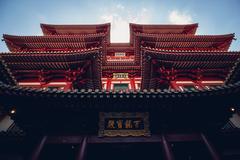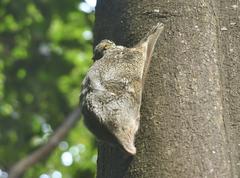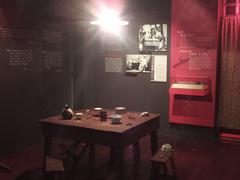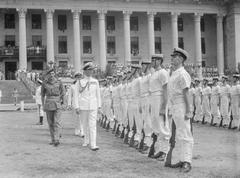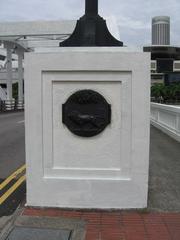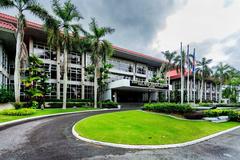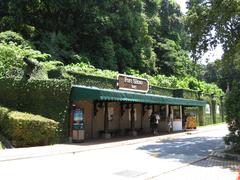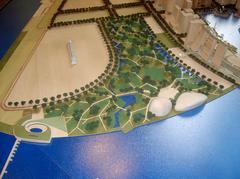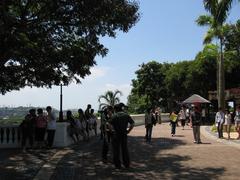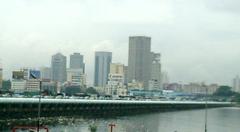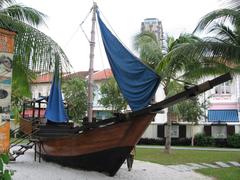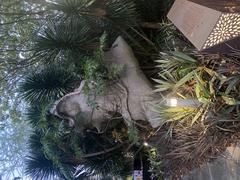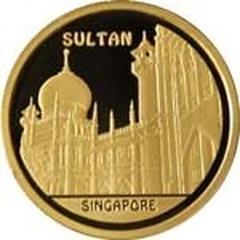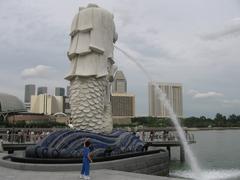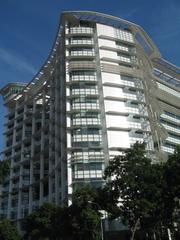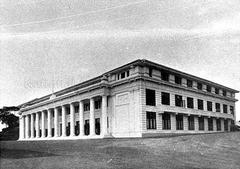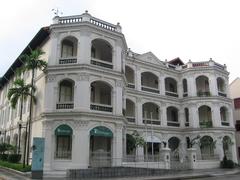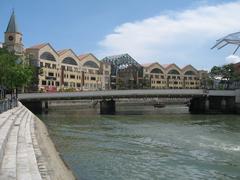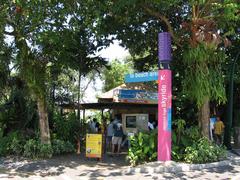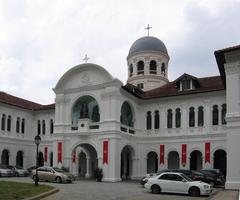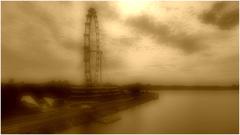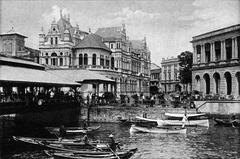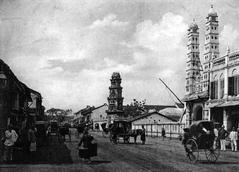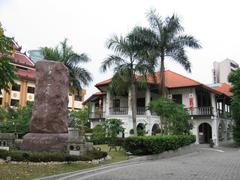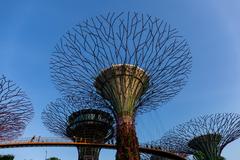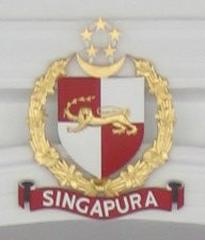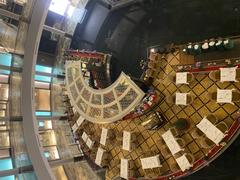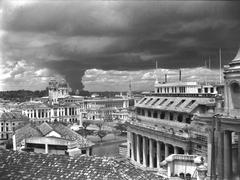
Cavenagh Bridge Singapore: Visiting Hours, Tickets, and Historical Significance
Date: 04/07/2025
Introduction
Cavenagh Bridge, gracefully spanning the Singapore River in the Civic District, is Singapore’s oldest surviving bridge in its original form. Completed in 1869, this iconic structure is not only an architectural and engineering marvel of its era but also a living testament to Singapore’s colonial history and multicultural evolution. With its distinctive Victorian cast-iron design, the bridge symbolizes Singapore’s transformation from a strategic colonial trading post to a vibrant modern city-state. Today, Cavenagh Bridge is a celebrated pedestrian landmark and a National Monument, drawing in history enthusiasts, photographers, and casual visitors alike. This guide provides a comprehensive overview of its rich history, architectural highlights, practical visitor information, nearby attractions, and travel tips to help you make the most of your visit.
Historical Background
Origins and Colonial Context
Cavenagh Bridge was constructed between 1868 and 1869, shortly after Singapore became a Crown Colony under direct British rule. It is named after Major General Orfeur Cavenagh, the last Governor of the Straits Settlements appointed by the British East India Company. Before the bridge’s existence, crossing the river required a lengthy detour or unreliable ferry services, making Cavenagh Bridge a crucial link between the government quarter (north bank) and the commercial heart (Commercial Square, now Raffles Place) on the south bank. Its construction facilitated the movement of merchants, officials, and residents, fostering economic and civic growth (NLB).
Design, Engineering, and Construction
Cavenagh Bridge is Singapore’s only suspension bridge and features the Ordish-Lefeuvre cable-stayed system, a pioneering design of the 19th century. British engineers Rowland Mason Ordish and George C. Collyer designed the bridge, while its components were prefabricated in Glasgow, Scotland and shipped to Singapore. Indian convict laborers assembled the bridge, marking one of their last major public projects in the colony. The combination of cast iron, intricate Victorian decorative elements, and advanced engineering showcased the technological achievements of the Industrial Revolution (publichistorysingapore).
Testing and Opening
To ensure its stability, the bridge was tested in Glasgow with weights four times its own mass before shipment. Upon assembly in Singapore, Indian soldiers (Madras sepoys) marched across it as a final test. Officially opened in 1869, it immediately became a vital thoroughfare for commerce and daily life.
Preservation and Heritage Status
As Singapore’s traffic grew, the bridge’s load capacity became insufficient for vehicles, leading to the construction of Anderson Bridge in 1910. Cavenagh Bridge was preserved as a pedestrian crossing, maintaining its historical integrity. It underwent major refurbishments in 1937 and 1987, and original features such as Victorian lamp posts and the famous police sign prohibiting cattle and heavy carts are still visible. On 15 October 2019, Cavenagh Bridge was gazetted as Singapore’s 73rd National Monument, ensuring its protection for future generations (Straits Times).
Symbolism and Legacy
Cavenagh Bridge stands as a symbol of Singapore’s resilience, multicultural unity, and respect for heritage. Its Hokkien nickname, “Hai ki thih tiau kio” (“iron suspension bridge by the sea shore”), reflects its significance among local communities. The bridge is a favored site for educational programs, public art, and cultural events, inviting visitors to connect with Singapore’s layered history.
Architectural Features
The bridge is about 79 meters long and 9.5 meters wide, with Victorian suspension struts, ornate lamp posts, and lattice railings. The Cavenagh family coat-of-arms graces its cross-beams. A playful family of Singapura cat sculptures and the original police sign at the entrance add to its charm. At night, strategic illumination enhances its photogenic appeal.
Visiting Cavenagh Bridge: Practical Information
Visiting Hours
- Open 24 hours a day, 7 days a week
- No restrictions on visiting times; accessible at all hours
Ticketing Information
- Free entry
- No tickets required
Accessibility
- Fully pedestrianized and wheelchair accessible
- Smooth, level ramps and pathways at both ends
- Suitable for families with strollers and visitors with mobility needs
How to Get There
- Nearest MRT stations: Raffles Place (5-minute walk), City Hall (10-minute walk)
- Served by numerous bus routes to Fullerton Road and Empress Place
- Taxis or ride-hailing services can drop off nearby
- Easily included in Singapore River walking or heritage trails
Best Time to Visit
- Early morning (7–9 am) or late afternoon to evening (5–8 pm) for cooler temperatures and ideal lighting
- Bridge is illuminated at night, offering excellent photo opportunities
What to See and Do
Architectural and Historical Highlights
- Suspension Structure: Ordish-Lefeuvre cable-stayed design, rare in Southeast Asia
- Victorian Details: Decorative struts, lamp posts, original signage (“Cattle and Horses are not allowed to cross this bridge”)
- Photogenic Views: Panoramic river, skyline, and Fullerton Hotel vistas; especially stunning after dark
- Public Art: Singapura cat sculptures and nearby statues of Sir Stamford Raffles
Nearby Attractions
- Asian Civilisations Museum: Rich displays of regional heritage (ACM)
- Fullerton Hotel Singapore: Heritage hotel with colonial architecture (Fullerton Hotel)
- Boat Quay & Clarke Quay: Riverside dining, nightlife, and river cruise departures (Singapore River Cruise)
- Merlion Park: Iconic Singapore landmark
- Victoria Theatre and Concert Hall: Performance arts venue
Events and Guided Tours
- Heritage trails and walking tours often include Cavenagh Bridge (Monster Day Tours, Singapore Walks)
- Venue for public art installations and festivals, including iLight Singapore (Trip.com)
- Special events during National Day and cultural festivals
Travel Tips
- Wear lightweight, breathable clothing and comfortable walking shoes
- Bring a hat, sunglasses, sunscreen, and a small umbrella for unpredictable weather
- No cycling on the bridge—dismount and walk your bike across
- Public restrooms are available at nearby museums and hotels
- Dispose of litter properly; smoking is prohibited on the bridge
- Respect the historical structure—do not climb or hang objects on railings
Enhancing Your Visit
- Photography: Visit at sunrise or sunset for best lighting; use the Victorian lamps and ironwork for creative framing
- River Cruises: Capture unique perspectives of the bridge from the water
- Social Media: Tag your photos with #CavenaghBridge and #VisitSingapore
Frequently Asked Questions (FAQs)
Q: Is there an admission fee to visit Cavenagh Bridge?
A: No, visiting Cavenagh Bridge is free of charge.
Q: What are the bridge’s opening hours?
A: It is open 24/7 with no restrictions.
Q: Is the bridge accessible for wheelchairs and strollers?
A: Yes, the bridge is fully accessible with gentle ramps and even surfaces.
Q: Can I cycle across the bridge?
A: Cycling is not permitted. Please dismount and walk your bike.
Q: Are guided tours available?
A: Yes, many heritage walking tours include Cavenagh Bridge.
Q: What is the best time to visit?
A: Early morning or evening for cooler weather and beautiful lighting.
Visual Resources
- High-quality images and virtual tours are available on official tourism platforms (Singapore Heritage Virtual Tours).
- Use descriptive alt tags for images, such as “Cavenagh Bridge illuminated at night in Singapore”, to enhance accessibility and SEO.
Summary
Cavenagh Bridge is a living testament to Singapore’s colonial history, multicultural heritage, and architectural brilliance. As the oldest suspension bridge preserved in its original form, it offers visitors a unique experience—blending engineering marvel with picturesque Victorian beauty. Open 24/7 and free to all, it is accessible, educational, and photogenic, making it an essential stop for locals and tourists alike. Surrounded by cultural landmarks and vibrant riverfront precincts, the bridge is an integral part of Singapore’s urban landscape and historical narrative.
For the latest updates, travel tips, and cultural insights, download the Audiala app and follow official tourism channels. Make Cavenagh Bridge a highlight of your Singapore exploration and connect with the city’s storied past and dynamic present.
Sources
- Singapore National Heritage Board
- Singapore Tourism Board
- Straits Times
- National Heritage Board: Cavenagh Bridge
- NLB
- Public History Singapore
- Trip.com
- Travels N Tourism: Cavenagh Bridge
- Singapore River Cruise
- Singapore Heritage Virtual Tours
- Rachel IRL
- Monster Day Tours
- Singapore Walks
- Asian Civilisations Museum
- Fullerton Hotel
- Singapore Trip Guide


















